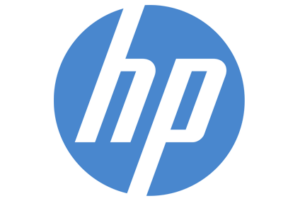
This week, Tom was away so I was in the writing chair as well as editing. Combined with a trip to an Epson event about Colour Light Output (of which, more later), and a detailed report from Chris that has meant some long days. Still, we have a lot of content this week.
On the front page, we highlight the split of HP into a PC and peripherals company and a server, software and services firm. That’s a big move for a big PC supplier, although it has been in process for just over a year. The resources and management time needed to split the organisations must have been huge, so an end to the process should liberate more energy to run the businesses.
HP was, for many years, an example of one of the finest of the US technology or test equipment companies. The company, as an organisation, was loved to an extent that didn’t apply to IBM or Tektronix. In that way, it had some things in common with Sony as a brand. HP made high quality products, initially in test equipment, and I first saw the company’s products in a development lab in 1970. It was very much a Californian company, although it went international and global quite early on.
However, I started to get to know HP better when I worked for a firm that was a distributor of HP peripherals, notably the company was the first (and exclusive) distributor of the HP Laserjet printer – a landmark product. I have strong memories of the HP150, a touch-enabled PC that the firm launched in 1983 – the company I worked for was a dealer for the computer, although not many were sold. The touch screen was a 9″ CRT with infrared touch that was very low resolution. The HP-150 was not IBM-compatible but HP eventually went that way in its PC business. The business model of making lots of money from consumables, now the key to printers, was developed, it seemed to me, with the company’s beautiful pen plotters. (Frighteningly, I remembered the 7475 plotter that we used to sell).
The PC business was really boosted with the merger with Compaq in 2002, which had already taken over DEC after the non-computing business had been spun off as Agilent in 1999. I don’t want to go through the detailed history since that time, others have done that well, but there were a number of failed acquisitions such as Palm and Autonomy as the firm struggled to find its way in the new world of the internet.
I still buy HP products, but usually where I care about reliability and solid engineering. If I had to sum up the company, from my point of view, it is often “worthy, but dull”. I’m confident that the firm will sort out any problems, if I have the patience to go through the firm’s processes, but I don’t look to the company for excitement or stylish design. I mentioned at MWC last year that the PC vendors looked very dull compared to the mobile device companies and HP was one of those. On the other hand, when I look at HP workstations and PCs, I always admire the care and attention to detail in the engineering.
Looking to the future, we will be paying attention to HP Inc, not the systems business. That firm has to compete primarily and initially with Lenovo and Dell. Lenovo has a strong position in China and real strength in mobile devices as well as the renowned ThinkPad brand for notebooks, as well as innovative products in the Yoga line and elsewhere. Dell, on the other hand, has the advantage of private ownership, which means that Michael Dell can do, within the constraints of keeping his creditors happy following the EMS purchase, what he likes. Dell’s display business seems also more focused on its own direction, independent of its PC business.
I’ve always been someone that likes to see focused companies. HP Inc is now very clearly aiming at PCs so we’ll be looking to see more innovation and concentration, especially in the display business.
Bob

